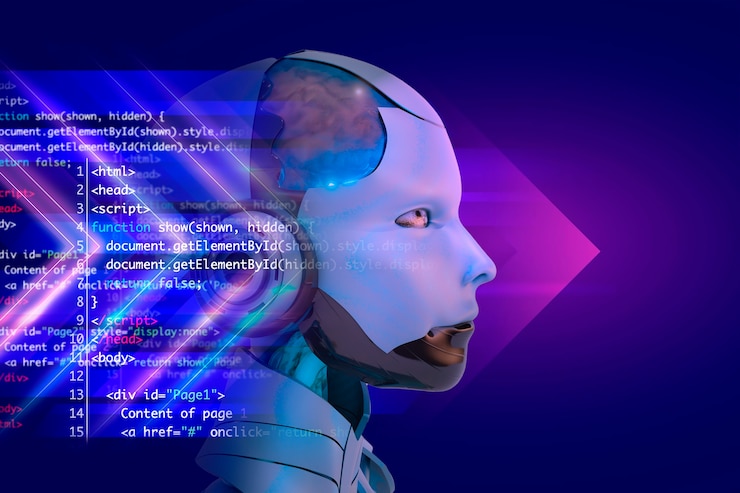“Where ink meets algorithm, the symphony of human ingenuity harmonizes with AI’s precision, creating a composition of creativity that transcends individual capabilities.” In an age where technology is integrated into lives, the convergence of tradition and innovation is reshaping industries. This partnership, marked by the synergy of ink and algorithm, has given rise to a new era of content creation.
The advantages of both sides are amplified to yield exceptional results. For students navigating the demands of academia, the collaboration between AI and human writers has a profound impact. The pressure to produce well-researched papers and essays can be overwhelming. This is where platforms like essaypro come into play. By utilizing AI-driven tools alongside human expertise, students can receive comprehensive assistance.
AI aids in generating relevant content and conducting preliminary research. This eases the initial stages of writing. The nuanced task of crafting coherent arguments is where human writers excel. WritePaper Review ensures that students receive papers that are structured and engaging.
Contents
The Rise of AI In Writing
Artificial intelligence has made remarkable strides in various domains. Writing is no exception. AI-driven language models, such as OpenAI’s GPT, have showcased their capacity to generate coherent text. These models are trained on vast corpora of text data. This enables them to understand linguistic nuances and even mimic the writing styles of different authors.
This advancement has fueled discussions about the potential displacement of human writers. However, the reality is more nuanced. Instead of replacing human writers, AI has become a powerful tool to enhance their capabilities. AI’s advantage is creating a harmonious relationship that leverages the strengths of both parties.
The Advantages of AI In Writing
1. Efficiency And Speed
One of the most significant advantages of AI in writing is its speed and efficiency. AI algorithms can process and generate vast amounts of text in seconds, a feat that would take human writers considerably longer. This efficiency is particularly valuable in scenarios requiring quick content turnaround. Those can be breaking news or real-time social media updates.
2. Data Analysis And Insights
AI can analyze large datasets to identify trends, patterns, and insights that can inform the writing process. This capability is invaluable for content strategists looking to tailor their messaging. By identifying topics that resonate with readers, AI can guide human writers in creating content that is more likely to engage.
3. Language Enhancement
Grammar and style are critical components of effective communication. AI tools can assist human writers in proofreading and refining language to ensure clarity and coherence. This collaborative effort between AI and human writers results in polished content.
4. Idea Generation
Writer’s block is a common challenge faced by human writers. AI can inspire by generating prompts, ideas, or even entire paragraphs based on a given topic. These AI-generated snippets can serve as starting points that human writers can expand upon.
5. Multilingual Content Creation
The world is a diverse tapestry of languages and cultures. While a human writer might be proficient in one or a few languages, AI can transcend language barriers. This capability is invaluable for global businesses seeking to communicate with audiences.
The Human Element: Irreplaceable Creativity
AI brings a plethora of advantages to the writing process. It is essential to recognize that aspects of creativity and emotion are uniquely human. Human writers can imbue their work with a depth of feeling and personal experiences.
1. Emotional Resonance
Human experiences are complex and often intertwined with emotions. Human writers can craft narratives that resonate on an emotional level. Whether it’s a heartfelt personal essay or a poignant work of fiction, the human touch adds authenticity.
2. Nuanced Interpretation
Language is rich with nuance, cultural references, and idiomatic expressions. Human writers understand and employ these subtleties to convey complex ideas. They can navigate the intricacies of humor, irony, and metaphor.
3. Adaptability And Contextual Understanding
The human mind remarkably adapts writing styles and tones based on the context and audience. Whether it’s an academic paper or a casual blog post, human writers can tailor their approach to match the desired tone.
4. Ethical And Moral Considerations
Writing often involves making ethical and moral judgments. Humans can weigh these concerns and decide how to approach complex subjects.
The Power of Collaboration
The true potential of AI and human writer collaboration lies in harnessing the strengths of both entities. AI and human writers can merge their talents when used as tools rather than substitutes.
1. Augmented Creativity
AI-generated prompts and ideas can spark new avenues of creativity for human writers. By leveraging AI’s ability to generate various possibilities, writers can explore unconventional concepts.
2. Quality Control
AI’s proficiency in identifying grammatical errors can enhance the quality of human-written content. This collaboration ensures that the final product is polished and error-free.
3. Scalability
For content-heavy industries like journalism and e-commerce, scalability is crucial. AI can generate a large volume of content, while human writers can focus on producing in-depth pieces.
4. Continuous Learning

AI systems are designed to learn from feedback and adapt over time. When human writers collaborate with AI, they contribute to the refinement. As AI gains a deeper understanding of language and context, its ability to assist and complement human writers will only grow.
Ethical Considerations And Future Outlook
Collaboration between AI and human writers holds immense potential. Plagiarism, for instance, becomes a concern when AI-generated content is not appropriately attributed. Looking forward, the trajectory of AI and human writer collaboration is promising.
AI models are becoming more sophisticated and attuned to human nuances. That’s why the divide between AI-generated and human-written content will continue to blur. This evolution will likely lead to even more seamless integration. However, it’s essential to acknowledge that AI does have limitations in specific writing tasks. For those seeking the benefits of human expertise, services like Essay-reviews offer a solution.
Conclusion
The synergy between AI and human writers is a testament to the ever-evolving nature of creativity and technology. AI brings efficiency, data analysis, and language enhancement to the table. At the same time, human writers contribute emotional resonance and cultural insight.
By harnessing the strengths of both parties, the realm of content creation is elevated to new heights. As ink meets algorithm, the future holds a landscape where creativity knows no bounds.




